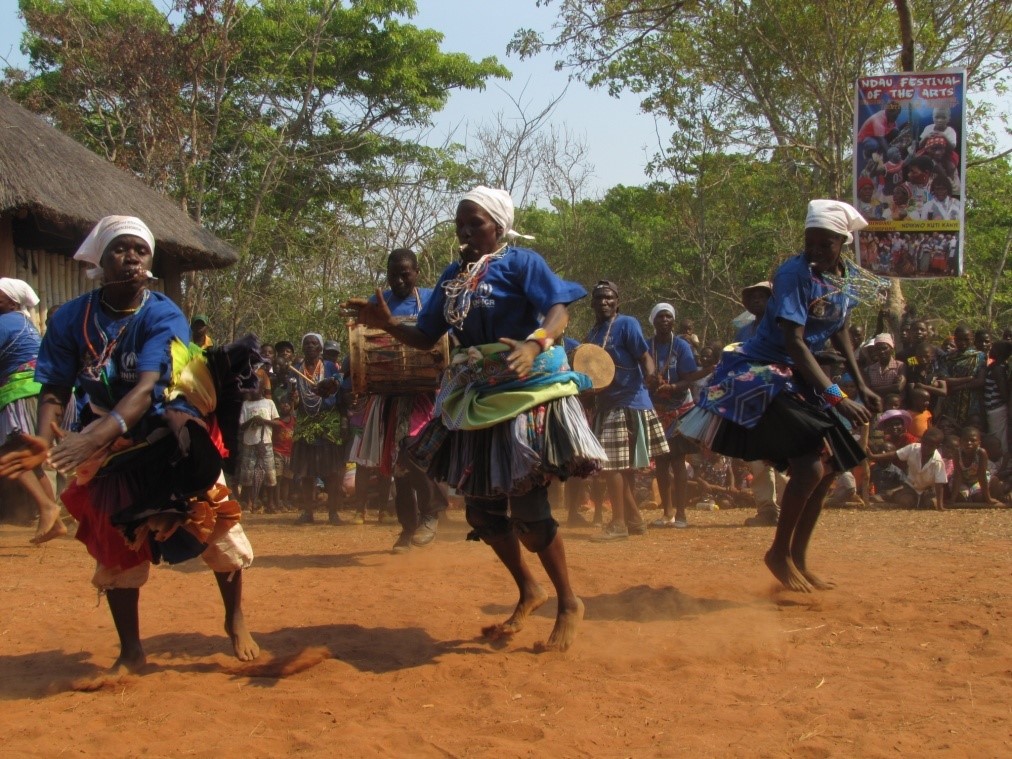By Rudo Saungweme
Cultural tourism in Zimbabwe has become one of the major forms of income generators boosting the economy. This is because of the history it gives about lifestyles and the way people lived in the past. Cultural tourism needs to be taken seriously although it is one side of tourism that some Zimbabweans tend to ignore.
Cultural tourism involves visits to museums, artistic activities, galleries and cultural heritage zones. This type of tourism revolves around traditional culture, including lifestyles, dressing, architectural buildings and handworks.
Wildlife and livestock management and enterprise, indigenous foods, beverages, food crops and plants, traditional designs and craftsmanship and indigenous games and performing arts are some of the areas that cultural tourism encompasses.
Cultural tourism is appreciated by many regionally and internationally. The cultural tourism industry, which also promotes the rural arts industry through capacity building of women artists and the marketing of their products to national and international markets, need to be revisited.
The twenty-second session of the UNWTO General Assembly held in Chengdu, China from 11 to 16 September 2017, defined cultural tourism as a type of tourism activity in which the visitors’ essential motivation is to learn, discover, experience and consume the tangible and intangible cultural attractions/products in a tourism destination.
These attractions relate to a set of distinctive material, intellectual, spiritual and emotional features of a society that encompasses arts and architecture, historical and cultural heritage, culinary heritage, literature, music, creative industries and the living cultures with their lifestyles, value systems, beliefs and traditions.”
The Global Code of Ethics for Cultural Tourism prescribes the protection of natural, artistic, archaeological and cultural heritage, to allow traditional cultural products, crafts and folklore to survive and flourish, rather than causing them to degenerate and become standardised.
In the thousands of years narrating mankind’s development, civilizations have thrived and tumbled, and in their wake, left legacies bearing their unforgettable mark in the history of the world. These legacies showcase the pinnacle of mankind’s abilities, be they in outstanding monuments or in the uniqueness of paintings and music. Heritage tells mankind’s story. Tourism enlivens this heritage.
In Zimbabwe cultural activities and places that are part of cultural tourism attractions include, Matobo Hills, Matobo National Park, Great Zimbabwe National Monument, and the Bulawayo Railway Museum.
All these attractions are a complementary attraction to domestic tourists and can boost Government revenue.
Tourists are fascinated by the history in these monuments.
For instance, the Great Zimbabwe National Monument once served as the capital of the medieval Kingdom of Zimbabwe. If the history of the medieval Kingdom is narrated it becomes interesting to those who really appreciate the history of those who lived way before us.
The Natural History Museum which was officially opened in 1964 features exhibits on the country's history, mineral wealth, and wildlife.
At the Bulawayo Railway Museum tourists learn the history of rail travel in Zimbabwe and Rhodesia.
Khami Ruins in Bulawayo is a former capital of the Butua State and a major trading center. Khami Ruins features a series of terraces with ornately decorated stone.
Cultural tourism needs to be supported as it contributes to the country’s domestic revenue. To promote cultural tourism, Government also needs to engage in cultural tourism expos. This means promoting the country’s cultural attractions to visitors and buyers during events such as the forthcoming Sanganai/Hlanganani World Tourism Expo which is set to be held in Bulawayo next month.
In Chiredzi a company called Centre for Cultural Development Initiatives (CCD) has engaged in the promotion of cultural tourism. CCD is planning to hold its Heritage Expo sometime in October and the First Lady Amai Auxillia Mnangagwa is expected to officiate at the Expo.
The Expo will run under the theme “Creating Solutions for Trans Frontier Conservation Areas (TFCA).”
The objectives of the expo are to raise awareness and understanding of indigenous knowledge as part of living heritage, to demonstrate the relevance of indigenous knowledge and technologies to the development of rural communities and to assess the progress made with regulatory authorities with regards to bio-prospecting access and benefit sharing.
If these cultural tourism expos are taken seriously this will boost the country`s revenue.
Cultural tourism is economically advantageous for both country destinations and communities that host cultural tourism as it helps in identity and national image building.
According to the World Tourism Organisation (WTO), cultural tourism accounts for 37 percent of annual global tourism receipts and it is set to grow by about 15 percent annually.




